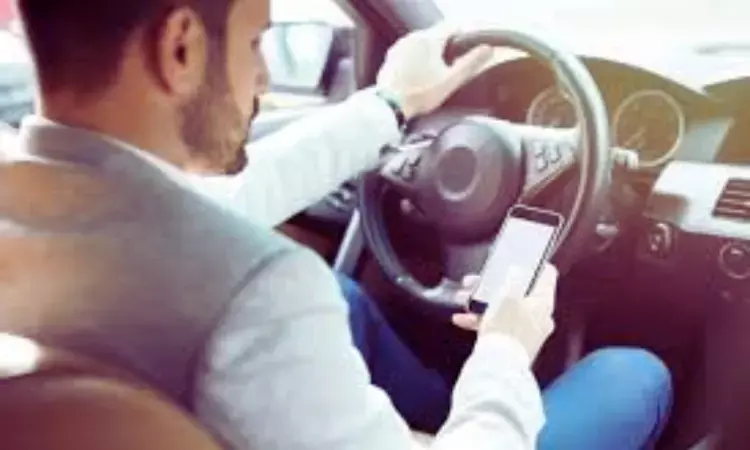- Home
- Medical news & Guidelines
- Anesthesiology
- Cardiology and CTVS
- Critical Care
- Dentistry
- Dermatology
- Diabetes and Endocrinology
- ENT
- Gastroenterology
- Medicine
- Nephrology
- Neurology
- Obstretics-Gynaecology
- Oncology
- Ophthalmology
- Orthopaedics
- Pediatrics-Neonatology
- Psychiatry
- Pulmonology
- Radiology
- Surgery
- Urology
- Laboratory Medicine
- Diet
- Nursing
- Paramedical
- Physiotherapy
- Health news
- Fact Check
- Bone Health Fact Check
- Brain Health Fact Check
- Cancer Related Fact Check
- Child Care Fact Check
- Dental and oral health fact check
- Diabetes and metabolic health fact check
- Diet and Nutrition Fact Check
- Eye and ENT Care Fact Check
- Fitness fact check
- Gut health fact check
- Heart health fact check
- Kidney health fact check
- Medical education fact check
- Men's health fact check
- Respiratory fact check
- Skin and hair care fact check
- Vaccine and Immunization fact check
- Women's health fact check
- AYUSH
- State News
- Andaman and Nicobar Islands
- Andhra Pradesh
- Arunachal Pradesh
- Assam
- Bihar
- Chandigarh
- Chattisgarh
- Dadra and Nagar Haveli
- Daman and Diu
- Delhi
- Goa
- Gujarat
- Haryana
- Himachal Pradesh
- Jammu & Kashmir
- Jharkhand
- Karnataka
- Kerala
- Ladakh
- Lakshadweep
- Madhya Pradesh
- Maharashtra
- Manipur
- Meghalaya
- Mizoram
- Nagaland
- Odisha
- Puducherry
- Punjab
- Rajasthan
- Sikkim
- Tamil Nadu
- Telangana
- Tripura
- Uttar Pradesh
- Uttrakhand
- West Bengal
- Medical Education
- Industry
Innovative Smartphone Apps Show Promise in Reducing Distracted Driving: JAMA

USA: The three primary factors contributing to most fatal auto accidents are not wearing seat belts, distracted driving, and driving under the influence. Distracted driving, particularly due to cell phone use, represents a significant 21st-century threat that has yet to be sufficiently tackled.
What’s a potential solution to smartphone distractions? A smartphone app! Research published in JAMA Network Open indicates promising progress in this area. Drivers were randomly assigned to various app-based interventions (or a control group) to assess their effectiveness in reducing the time spent handling phones. These apps delivered both the interventions and the monitoring necessary for the study.
In the randomized clinical trial involving 2,020 auto insurance customers, the median baseline use of handheld phones while driving was 216 seconds per hour. Participants who received interventions that combined social comparison feedback and financial incentives decreased their handheld phone use while driving by 15% to 21% compared to the control group.
The use of handheld phones while driving is a major factor in vehicle crashes. There is a need for scalable interventions to encourage drivers not to use their phones. Considering this, M. Kit Delgado, University of Pennsylvania, Philadelphia, and colleagues aimed to test whether interventions involving social comparison feedback and/or financial incentives can reduce drivers’ handheld phone use.
In a nationwide randomized clinical trial, interventions were delivered through a mobile application as part of a usage-based insurance program (Snapshot Mobile application). Customers were eligible to participate if they had been enrolled in the program for 30 to 70 days. The study took place from May 13 to June 30, 2019, with analysis finalized on December 22, 2023.
Participants were randomly assigned to one of six trial groups for a 7-week intervention period: (1) control; (2) feedback, which included weekly push notifications about their handheld phone usage compared to peers; (3) standard incentive, offering a maximum reward of $50 based on their phone use concerning similar individuals; (4) standard incentive plus feedback, combining elements from groups 2 and 3; (5) reframed incentive plus feedback, featuring a weekly maximum reward of $7.15 presented as a potential loss; and (6) doubled reframed incentive plus feedback, with a maximum weekly loss-framed reward of $14.29.
The primary measure was the proportion of driving time spent using a handheld phone, expressed in seconds per hour (s/h). Analyses were performed using an intention-to-treat approach.
The study led to the following findings:
- Of 17 663 customers invited by email to participate, 2109 opted in and were randomized. A total of 2020 drivers finished the intervention period (68.0% female; median age, 30 years).
- Median baseline handheld phone use was 216 (IQR, 72-480) s/h.
- Relative to control, feedback and standard incentive participants did not reduce their handheld phone use.
- Standard incentive plus feedback participants reduced their use by −38 s/h; reframed incentive plus feedback participants reduced their use by −56 s/h; and doubled reframed incentive plus feedback participants reduced their use by −42 s/h.
- The 5 active treatment arms did not differ significantly from each other.
In the study, providing social comparison feedback plus incentives decreased handheld phone use while individuals were driving.
"The findings of this study indicate that auto insurers could integrate these interventions into behavior-based insurance plans, potentially reducing distracted driving on a larger scale and thereby decreasing crash risks in the population," the researchers concluded.
Reference:
Delgado MK, Ebert JP, Xiong RA, et al. Feedback and Financial Incentives for Reducing Cell Phone Use While Driving: A Randomized Clinical Trial. JAMA Netw Open. 2024;7(7):e2420218. doi:10.1001/jamanetworkopen.2024.20218
Dr Kamal Kant Kohli-MBBS, DTCD- a chest specialist with more than 30 years of practice and a flair for writing clinical articles, Dr Kamal Kant Kohli joined Medical Dialogues as a Chief Editor of Medical News. Besides writing articles, as an editor, he proofreads and verifies all the medical content published on Medical Dialogues including those coming from journals, studies,medical conferences,guidelines etc. Email: drkohli@medicaldialogues.in. Contact no. 011-43720751


